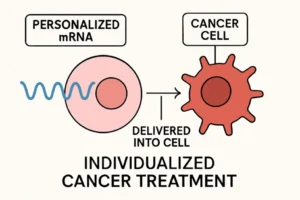In the digital era, where instant messaging and real-time communication dominate nearly every aspect of our lives, the healthcare industry is under increasing pressure to modernize how it connects with patients. While consumer apps like WhatsApp or iMessage offer fast and user-friendly communication, they fall short when it comes to protecting sensitive health information. This is where HIPAA compliant messaging becomes not just important, but absolutely essential.
The Evolution of Patient Communication
Not long ago, healthcare communication was limited to landline calls, appointment reminder postcards, and long waiting times. While that might still be the norm in some practices, the expectations of today’s patients have drastically changed. Consumers now want the same speed and convenience from their healthcare providers that they get from food delivery services and online retailers.
Texting, online booking, and instant follow-ups have become the new standard. Patients expect transparency, responsiveness, and personalized experiences—delivered quickly and securely. Ignoring this shift risks not only patient satisfaction but long-term retention.
Modern healthcare is no longer just about treatment—it’s about experience. Practices that embrace seamless, secure communication are more likely to stand out, grow faster, and build stronger patient loyalty.
However, healthcare providers can’t just jump on the bandwagon of every new messaging platform. They are governed by the Health Insurance Portability and Accountability Act (HIPAA), which places strict requirements on how protected health information (PHI) is stored, shared, and accessed.
What Does HIPAA Require?
HIPAA is designed to safeguard patient data and ensure confidentiality, integrity, and availability. When it comes to digital communication, that means:
- End-to-end encryption of messages
- Audit trails of all communication
- Access controls and authentication
- Data storage in HIPAA-compliant servers
- Business Associate Agreements (BAAs) with any third-party vendors handling PHI
If your clinic or medical office is texting patients through non-secure platforms or storing messages on personal devices, you may already be violating HIPAA—whether you realize it or not.
The Real Risks of Non-Compliant Messaging
Let’s say a front desk staff member texts a patient to confirm an appointment using a personal smartphone. Seems harmless, right? Unfortunately, that single message might contain PHI and thus be subject to HIPAA. If that phone gets lost, hacked, or stolen, you could be facing:
- Hefty Fines: Penalties for HIPAA violations can reach up to $50,000 per incident.
- Lawsuits: Patients whose information is compromised may pursue legal action.
- Reputation Damage: Trust is fragile in healthcare. One breach can have long-lasting effects on patient confidence.
- Operational Headaches: Investigations, audits, and recovery can bring operations to a grinding halt.
And yet, communication delays also carry risks—missed appointments, poor outcomes, and frustrated patients. That’s why the goal shouldn’t be to avoid messaging altogether but to implement the right kind of messaging.
What Is HIPAA Compliant Messaging?
HIPAA compliant messaging refers to platforms and tools specifically designed to meet all HIPAA privacy and security standards while facilitating real-time communication. These platforms allow healthcare staff to:
- Text patients securely about appointments, forms, test results, and follow-ups
- Send intake forms or telemedicine links in compliance with privacy rules
- Message internally between staff with proper logging and security
- Manage all communications from a centralized dashboard with full auditability
One such platform that leads the way in this space is Curogram. Their solution integrates seamlessly with EHRs, enables both patient and internal communication, and ensures that every message is encrypted, logged, and secured.
Why You Can’t Afford to Skip This
Let’s face it: patients are tired of missed calls, voicemail chains, and outdated communication. And if your clinic is still relying on those methods, you’re not just behind—you’re vulnerable.
Here’s what adopting a HIPAA compliant messaging platform unlocks:
1. Faster Response Times
Secure texting platforms reduce delays, whether it’s confirming appointments, sending reminders, or answering basic patient inquiries.
2. Fewer No-Shows
Patients are more likely to see a text than a voicemail. Automated SMS reminders sent from a compliant system can drastically reduce no-show rates, saving both time and revenue.
3. Improved Staff Efficiency
Rather than chasing phone calls, your team can manage multiple conversations at once and use automation to handle repetitive tasks like check-in forms or feedback collection.
4. Better Patient Experience
Convenience matters. The smoother your communication, the more likely patients are to stay loyal and refer others.
5. Total Peace of Mind
With full compliance, BAAs in place, and secured messaging, you can focus on care delivery without worrying about a surprise audit or breach.
Making the Transition: What to Look For
Not all messaging platforms are created equal. When evaluating tools for HIPAA compliance, consider the following features:
- Two-Way Messaging: Patients should be able to respond in a secure channel.
- EHR Integration: Seamless integration ensures you’re not toggling between systems.
- Secure File Transfer: Can you send lab results or documents safely?
- Automated Workflows: Look for templates and automation features that reduce manual effort.
- Multi-Location Support: If you have multiple branches, you need centralized oversight.
- Full Audit Logs: Every message should be time-stamped and traceable.
Curogram: Designed for Compliance and Convenience
Curogram stands out because it was built from the ground up with HIPAA in mind, not retrofitted after the fact. With a user-friendly interface and robust backend security, it empowers clinics of all sizes to ditch manual reminders and disjointed communication tools.
From appointment scheduling and digital intake to staff messaging and telemedicine, Curogram offers a complete communication suite that’s as easy to use as it is secure. And yes, it’s fully HIPAA compliant from end to end.
To learn more, visit their page on HIPAA compliant messaging.
Final Thoughts
It’s no longer a question of if your practice should upgrade its communication tools—it’s a question of how fast you can make the change before you fall further behind or face serious compliance consequences. Patients want modern experiences. Your team needs better tools. And HIPAA compliance is non-negotiable.
With the right platform, you don’t have to choose between convenience and compliance—you can have both.
Need more insights on healthcare digital tools? Check out this helpful overview of patient engagement platforms.
Also Read-How Ethical Breeding Influences Cavapoo Health and Behavior










